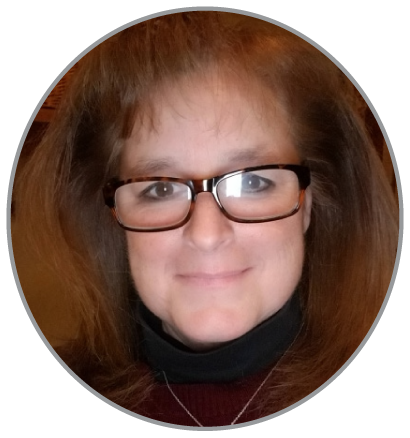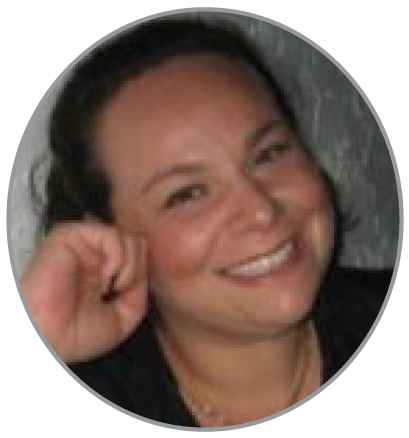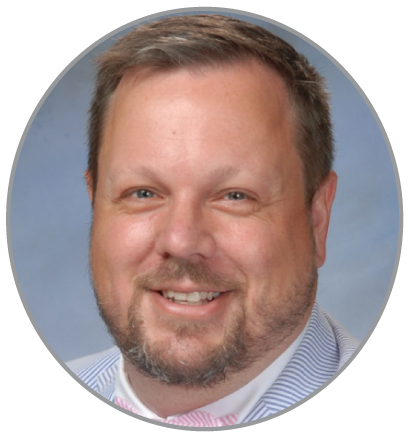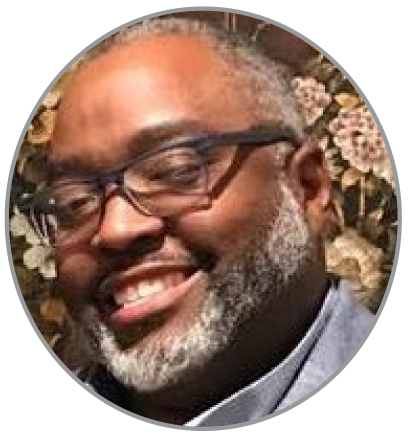
Debra Berndt—Principal, Birchwood Elementary School, Niskayuna, NY

Aliza Kadish—Principal, Beacon Hill Preparatory School, Miami Gardens, FL

Trey Veazey—Assistant Head of Lower School, The Walker School, Marietta, GA
Leslie Paynter—Managing Director/Principal of Alamance Community School (ACS), Haw River, NC

Robert Milner—Principal and Executive Director of Hope Leadership Academy, Kansas City, MO
What is something (preferably related to social and emotional learning) you are changing or doing differently in your school this year?
Debra Berndt: We will be returning to the practice of holding a school-wide Morning Meeting each month. These may be held in different formats, depending on the requirements for social distancing—virtually, in person as a whole school community or in person in smaller community groups. We believe in the power of bringing our community together in this way to keep our relationships strong and a focal point of our work together.
Aliza Kadish: This year, we have added Fly Five SEL curriculum to ensure we teach students the appropriate social skills and how to handle the emotions they feel.
Trey Veazey: Thinking about our school’s mission to inspire transformative learning through meaningful relationships, I wanted to spend a lot of time this year focusing on my five goals for our students, families, faculty, and staff—in particular, joyful community. After a year in which necessity had our community feeling rather disconnected, I wanted to hone in on the work required to make sure everyone felt a strong sense of belonging. I want everyone in our community to have multiple connections—a plethora of heartfelt pathways that lead to student success by way of togetherness. In theory, this is not so different from what we do year in and year out at Walker, but this year’s work is more intentional, given what everyone experienced last year.
Leslie Paynter: Over the summer, we purchased the Fly Five SEL curriculum and are beginning to implement it school-wide.
Robert Milner: We have done whole-staff social and emotional training as well as implemented the Fly Five SEL curriculum for our transitional kindergarten students.
What inspired you to make this change? What do you hope the outcome will be?
Debra Berndt: Before the pandemic and the shutdown that followed, we held monthly school- wide Morning Meetings in addition to daily classroom meetings. These meetings resulted in an immediate benefit of building a strong community, with the students and staff responding with a higher energy and excitement for the day. This carried over throughout the day and contributed to a stronger and more energized school community. Last year, with the safety protocols in place, we had to abandon our school-wide Morning Meeting, and we felt the loss. We held one virtual meeting to close out the school year, and again saw the immediate benefits. This is what is driving our change going into this year.
Aliza Kadish: One of the reasons I work in an independent school is because we have the time and space to educate the whole child—mind, body, and spirit. I knew that I wanted to introduce an SEL program since I started here two years ago. It has taken some time to educate teachers on the need for this and the positive outcomes that will come with teaching SEL with fidelity. Now, with teacher buy in and support, I knew this was the right year for the right curriculum to be introduced, namely, Fly Five.
Trey Veazey: In the sense that we will be building community across groups of students, families, and educators, I am excited to get to know these individuals more fully, learn about their needs as they relate to our community, and build, in concert, their capacity relative to social and emotional learning. We had a sizable group of new students and families who joined us last year and, as a result of being distanced by the pandemic, still feel new to the community. Couple them with this year’s new students and families, and we have a notable number of people who are potentially in the position of attending the school without the valuable touchpoints of consistent, in-person connections. There are many benefits of having these families involved in the school experience. It is in the school’s best interest to involve all families and to also engage them in ways that enrich their own involvement.
Leslie Paynter: For our children to be successful academically, they must be able to collaborate and have empathy for others. However, we did not have a set SEL curriculum, and we were instead pulling resources from multiple sites and sources. When we heard about the Fly Five SEL curriculum, we were excited to find a set curriculum that would not only help us be more intentional when teaching our SEL standards, but would also save us the time and energy searching for SEL lessons and resources. Furthermore, as a school that practices Responsive Classroom, it aligns with our core values.
Robert Milner: We know that our students are in need—because of our community needs as well as the pandemic that we continue to face.
Briefly, please describe your approach to implementing and sustaining this change. How are you making it happen?
Debra Berndt: I have a core group of teachers working with me to plan the school-wide Morning Meetings. We will be keeping each of the components very simple, to make sure all participants feel comfortable in the meetings. We plan to hold them monthly, so as to not overwhelm staff or students. In this way, we are keeping our momentum going, but doing so in a smart and thoughtful way.
Aliza Kadish: I started with teacher buy in and support. With that in place, teachers were given the freedom to determine what days and times they were going to teach Fly Five, and the flexibility to change that time if it wasn’t working for their class. Teachers who have completed the ten-hour asynchronous course feel it is among the best trainings they have taken part in, and they are confident in their ability to implement the program with fidelity and to make it suit them and their students’ needs. SEL continues to be a priority at our weekly grade level curriculum meetings and in our ongoing professional development plan.
Trey Veazey: As part of building a joyful community, the Lower School is looking for ways to provide a series of “doors” and “windows.” Where and how can we provide opportunities for gathering? What can we spotlight? How can we communicate more clearly, with more consistency and with greater efficiency? The answers to these questions point to developing entry points and viewing galleries for the school’s work, furthering the likelihood of familial engagement and, therefore, student success. I look forward to diving into this work through one of my great passions—enhanced experiences. We plan to build family volunteers into some of our signature on-campus events. Connections among families will be further developed through grade level family gatherings. I am also really excited about the expansion of cultural competence through continued conversation around our families’ cultural identities, and their practices and celebrations. It is my fervent hope that these and similar initiatives will help to usher everyone in our community toward a place of thorough belonging.
Leslie Paynter: I believe in working as a team and do not like working in a “bubble.” Having a staff with the same philosophy, vision, and values will be key to implementing and sustaining change. In implementing the plan, it will be important for me to be open to feedback, to listen, and to admit when I am wrong. Cultivating mutual trust comes from all of us—administrators, teachers, and staff. I always try to be open, honest, and transparent, even when there are difficult situations or hard decisions to make. I want all staff members to feel safe, valued, and respected, and be able to speak openly and honestly. Again, I don’t like working in isolation, but value collaboration. I find that the results are far more innovative and higher quality when we work together to find better solutions and make changes.
Robert Milner: We are relying heavily on our school counselor for whole-staff training, which has been in collaboration with the Truman Medical Center. We have also purchased the Fly Five SEL curriculum for our transitional kindergarten students.
If there is anything else you would like to share about how your school community is approaching the 2021–2022 school year, please feel free to do so here.
Debra Berndt: Our school community, like all others, is experiencing a high level of anxiety and uncertainty. At the start of the pandemic, we found that our training and use of the Responsive Classroom approach helped us—the adults and most importantly our students—cope with this level of potential stress. We are entering this school year with our new Hopes and Dreams for a great school year together.
Aliza Kadish: Our faculty, staff, parents, and administration are excited by the idea of students learning SEL skills, especially because they are twenty-first century skills that students will always need. We continue to have the burden of COVID-19 and making it a priority to keep everyone safe as we think outside the box to accomplish goals set for students.
Trey Veazey: Our school’s administrative team worked together to create leadership goals for the upcoming school year, and those goals will be terrific lenses through which we view the school’s immediate work. By way of proactive communication, a strong sense of community, and a celebration of our school’s 65th year, the essence of #OneWalker is strong. I am proud to play a part in assisting each of our Lower School students, their families, and our faculty and staff members not only find their place here but also to help them to flourish in it.
Leslie Paynter: We are going to begin the year with a K–4 community school project. The goal is to teach our students how they are connected to the world and for them to have the opportunity to look for ways that they can also make a difference by making change happen within their own classroom, school, and community. This project also meshes well with Responsive Classroom and our empathy initiative.
Our grade level projects are aligned with the North Carolina Science and Social Studies standards. Field experiences and guest experts are key components of our project work. Children are engaged in meaningful work that matters to them through tasks and inquiries designed to meet the educational standards. We want to develop the habits of mind and characteristics of lifelong learners: persistence, thinking flexibly, striving for accuracy and precision, questioning, creating, imagining and innovating, and thinking interdependently.
